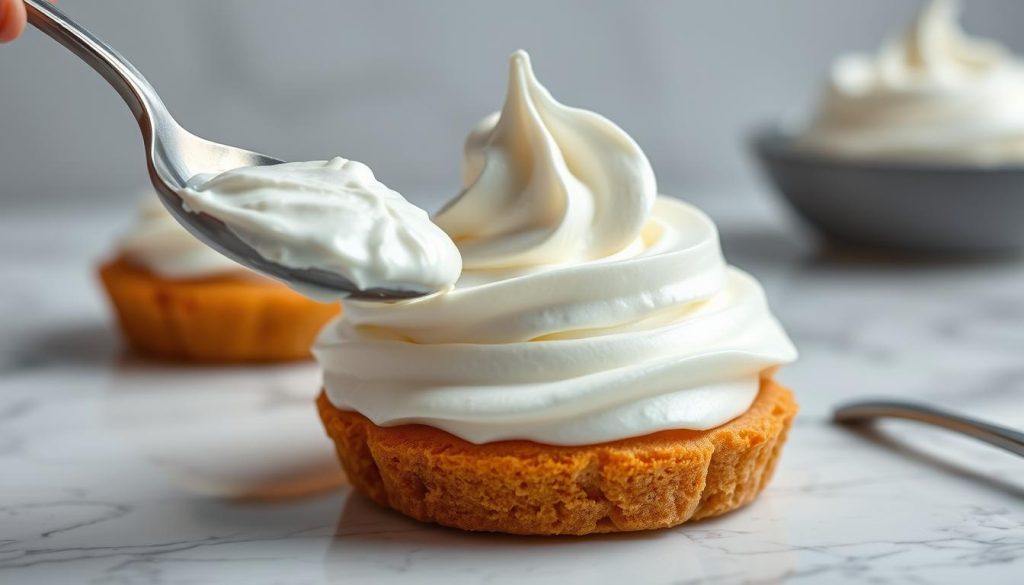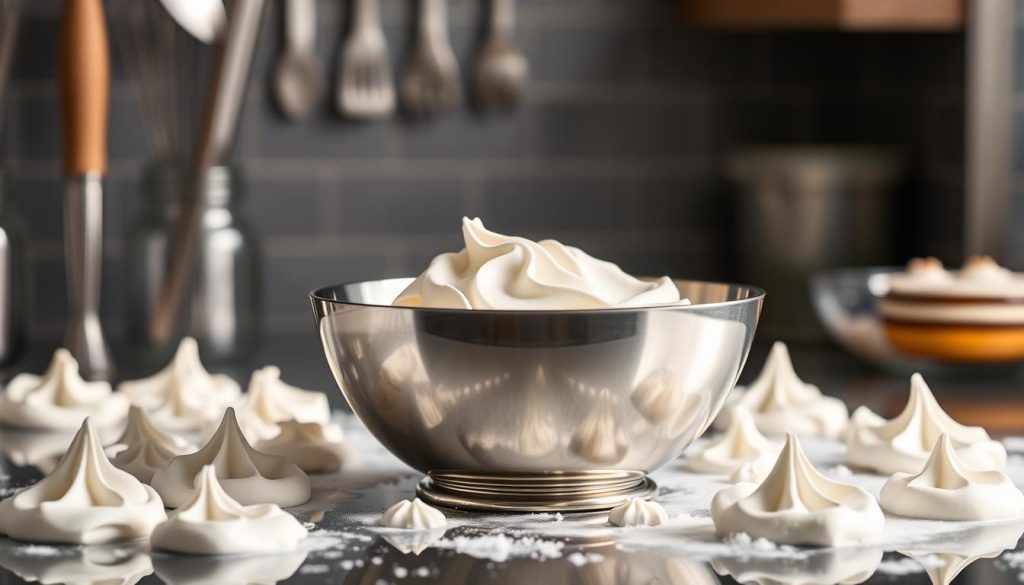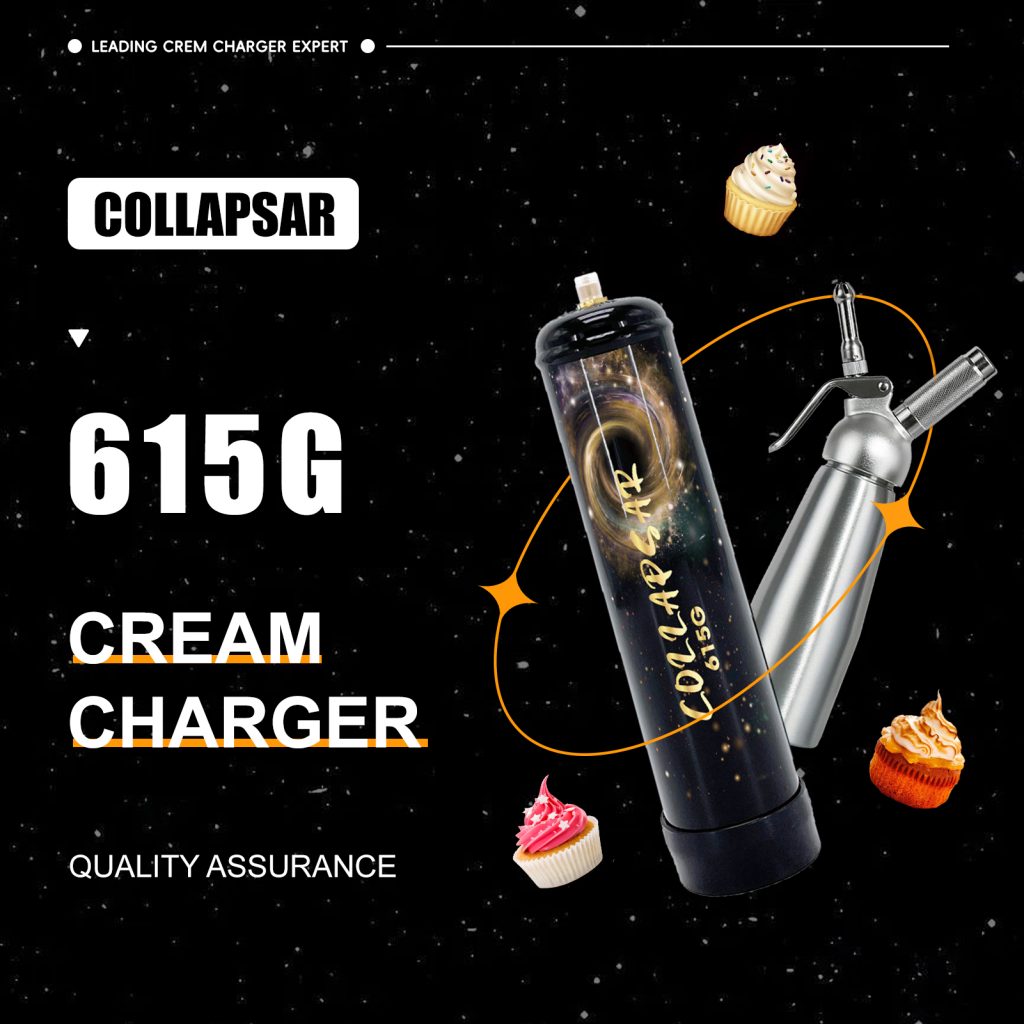Have you ever wondered about the secret behind whipped cream’s magical transformation from liquid to cloud-like fluff? That billowy topping that elevates everything from hot chocolate to pie isn’t just delicious—it’s also a fascinating example of food science in action. In this guide, we’ll uncover the molecular magic, professional techniques, and creative variations that will transform your whipped cream game forever.
The Science Behind Whipped Cream’s Transformation
The secret behind whipped cream lies in its molecular structure. When you whip heavy cream, you’re actually performing a remarkable feat of food engineering. The fat molecules in cream form a protective layer around tiny air bubbles introduced during whipping, creating a semi-stable foam structure.
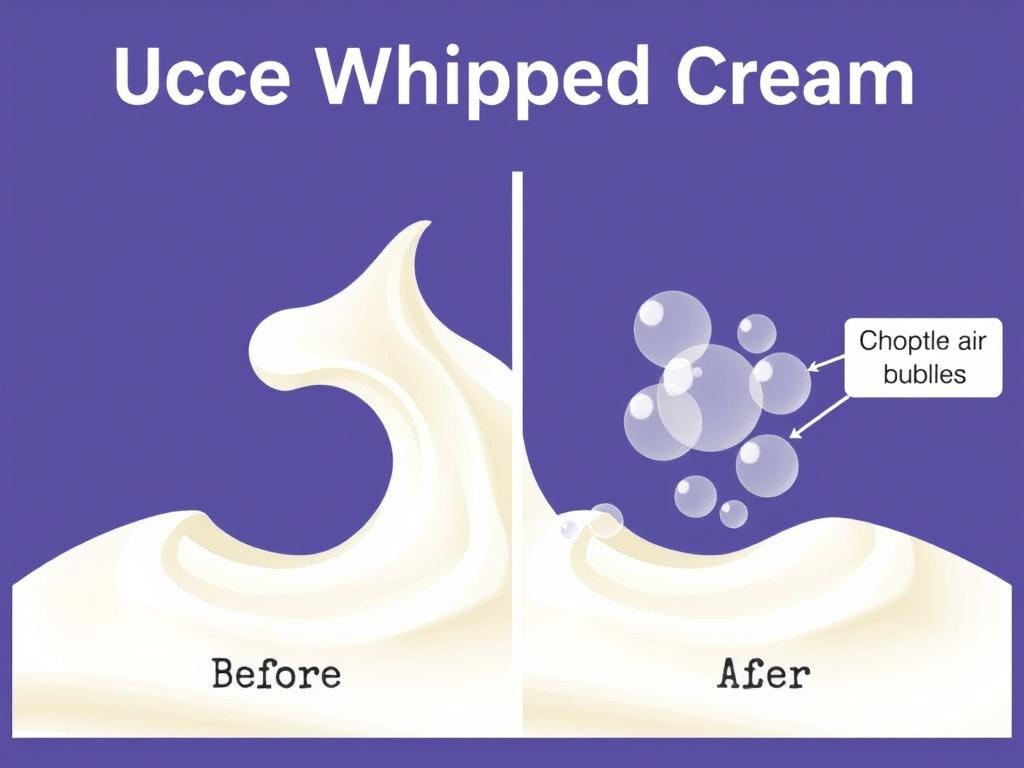
Fat molecules in cream surround air bubbles to create whipped cream’s structure
As you whisk, the agitation causes the fat globules in the cream to partially coalesce, creating a network that traps air. This network is what gives whipped cream its structure. The transformation happens in stages: first liquid, then frothy, then soft peaks, firm peaks, and if you go too far—butter!
“Whipping cream is like building a house of cards with fat molecules. The structure is delicate but can be reinforced with the right techniques.”
This process is similar to how engineers create lightweight but strong materials by incorporating air pockets into solid structures. The key difference? Your whipped cream’s structure is temporary unless you take steps to stabilize it.
Key Factors Affecting Whipped Cream Stability and Texture
Fat Content: The Foundation of Structure
The fat percentage in your cream is crucial to successful whipping. Heavy cream or heavy whipping cream (36-40% fat) produces the most stable results. Whipping cream (30-35% fat) works too, but with slightly less stability. Anything below 30% fat simply won’t hold enough air to create proper whipped cream.
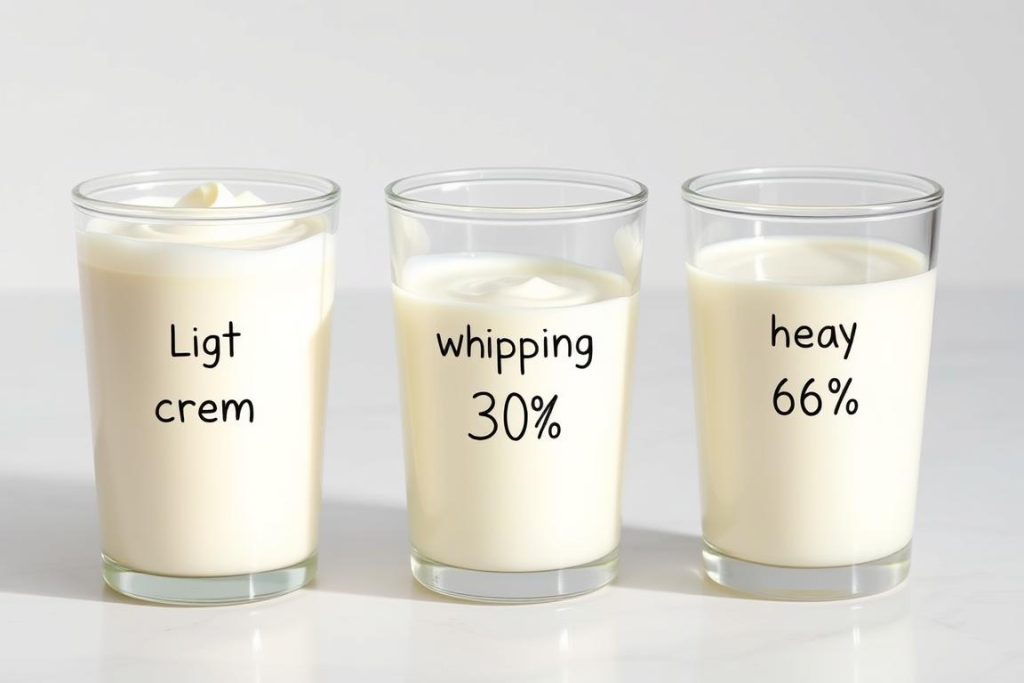
Higher fat content creates more stable whipped cream
Temperature: Cold Is Critical
Temperature plays a vital role in whipped cream stability. Cold cream whips better because the fat molecules are more solid and can trap air more effectively. For best results:
- Refrigerate cream until just before using
- Chill your bowl and whisk in the freezer for 15 minutes
- Work in a cool kitchen environment when possible
- Return partially whipped cream to the refrigerator if your kitchen is warm
Tools and Techniques: The Right Equipment
Your choice of whipping tools affects both the time required and the texture achieved:
Stand Mixer with Whisk Attachment
Provides consistent power and frees your hands. Best for larger batches and when you need precise control over the whipping stage.
Hand Mixer
Offers good control and is more accessible than a stand mixer. Perfect for medium batches and everyday use.
Manual Whisk
Gives the most control but requires more effort. Creates slightly denser cream with smaller air bubbles for a silkier texture.
Food Processor or Blender
Creates dense, smooth whipped cream very quickly. Be careful—it can go from liquid to butter in seconds!
Pro Tip: Medium speed is ideal for whipping cream. High speed incorporates air too quickly and can lead to overwhipping, while low speed takes too long and may result in uneven texture.
Professional Techniques for Perfect Whipped Cream
Secrets for Long-Lasting Structure
The secret behind whipped cream that holds its shape for hours lies in stabilization techniques. Professional pastry chefs use several methods:
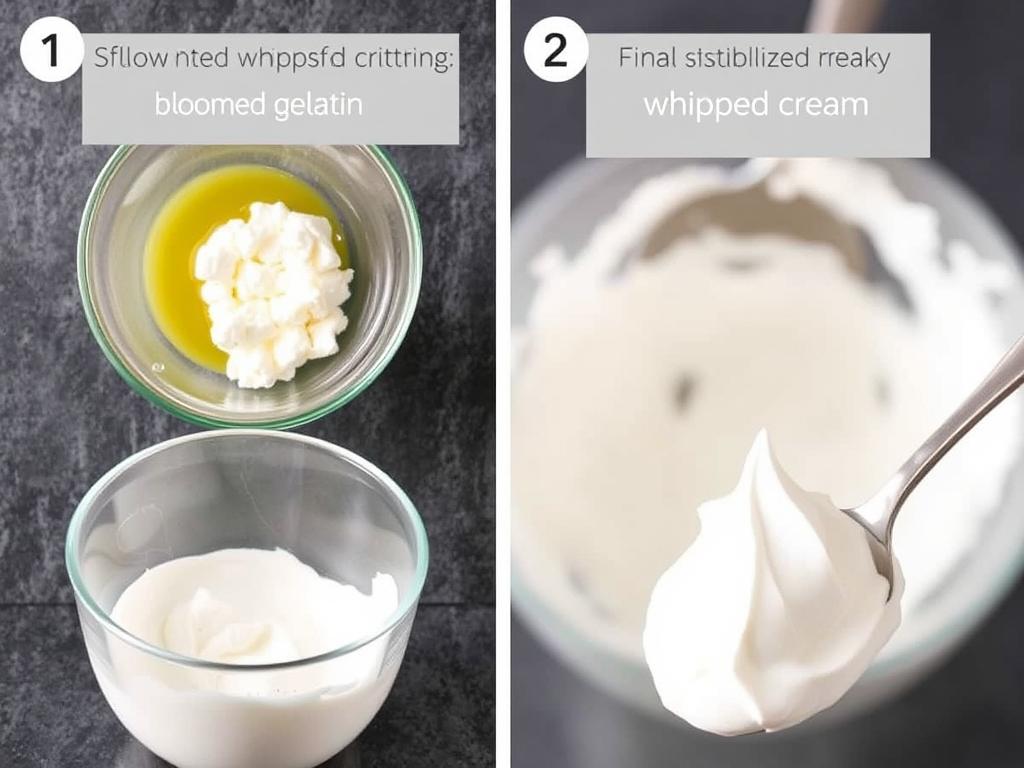
Gelatin Method
Dissolve ½ teaspoon unflavored gelatin in 1 tablespoon cold water, then heat until dissolved. Cool slightly and slowly drizzle into 1 cup cream while whipping at medium speed. This creates whipped cream that holds its shape for up to 24 hours.
Cornstarch Technique
Mix 1 teaspoon cornstarch with 2 tablespoons powdered sugar. Combine with ¼ cup cream in a small saucepan, bring to a simmer, then cool completely. Whip remaining cream to soft peaks, then add cornstarch mixture and continue whipping.
Crème Fraîche Addition
Replace ¼ of your heavy cream with crème fraîche. The higher fat content (42% vs. 36%) helps maintain structure. This method adds a subtle tanginess that complements sweet desserts beautifully.
“The addition of a little crème fraîche to every cup of whipping cream will ensure beautiful sheen, extra smoothness, and fuller flavor.”
Flavor Infusion Methods
Beyond vanilla, professional pastry chefs use these techniques to create uniquely flavored whipped creams:
- Cold Infusion: Combine cream with ingredients like coffee beans, citrus zest, or spices. Refrigerate 24 hours, then strain before whipping.
- Extract Layering: Combine multiple extracts (vanilla, almond, coconut) in small amounts for complex flavor profiles.
- Alcohol Integration: Add 1-2 teaspoons of spirits like bourbon, rum, or liqueurs after reaching soft peaks.
- Powdered Additions: Incorporate cocoa powder, espresso powder, or freeze-dried fruit powder for intense flavor without affecting texture.
Alternative Sweeteners
Different sweeteners create subtle variations in flavor and texture:
| Sweetener | Properties | Best Used With |
| Powdered Sugar | Contains cornstarch that helps stabilize | All-purpose applications |
| Granulated Sugar | Slightly coarser texture, pure sweetness | Recipes where you’ll whip for longer |
| Honey | Adds distinct flavor, natural preservative | Fruit desserts, tea cakes |
| Maple Syrup | Rich flavor, slightly reduces stability | Fall desserts, breakfast applications |
| Brown Sugar | Caramel notes, slight molasses flavor | Spiced desserts, apple or pumpkin pie |
Common Mistakes That Ruin Whipped Cream
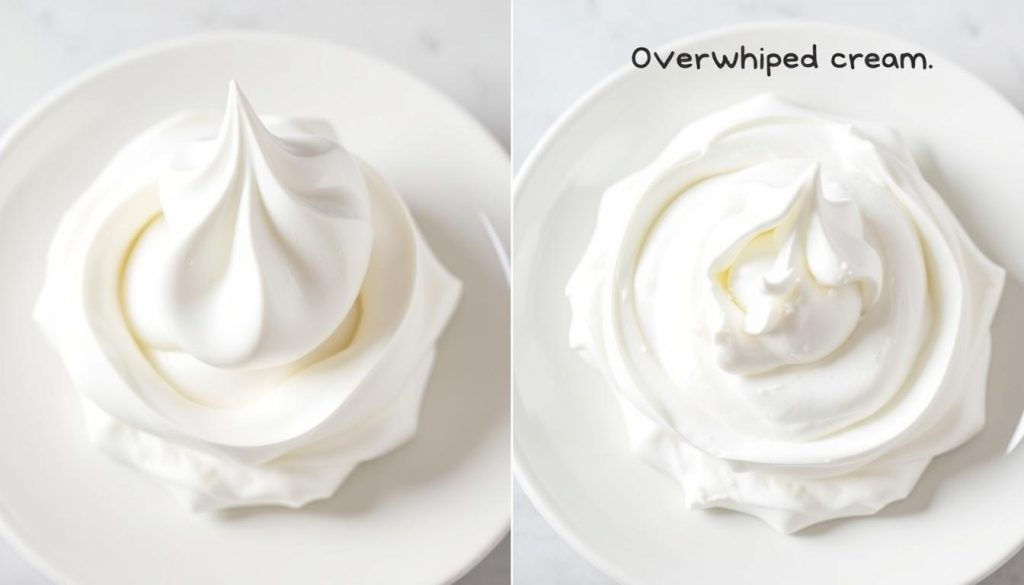
Left: Properly whipped cream with soft peaks. Right: Overwhipped, grainy cream
What To Do
- Use cold equipment and ingredients
- Whip at medium speed for best control
- Stop whipping at soft or medium peaks for most uses
- Add stabilizers for longer-lasting results
- Add flavorings at the beginning or soft peak stage
What To Avoid
- Using warm or room temperature cream
- Whipping at high speed without monitoring
- Walking away during the whipping process
- Adding too much liquid flavoring
- Using cream with insufficient fat content
Rescuing Overwhipped Cream
If your whipped cream starts looking grainy or curdled, it’s not a lost cause! Gently fold in 1-2 tablespoons of cold cream by hand using a spatula. This can help smooth out the texture and rescue your whipped cream before it fully turns to butter.
The Science: Overwhipping breaks the fat globule membranes, causing fat to clump together and squeeze out liquid (buttermilk). Adding fresh cream provides new intact fat globules that can reintegrate with the mixture.
Creative Whipped Cream Variations
Alcohol-Infused Whipped Creams
Spirits and liqueurs add sophisticated flavor dimensions to whipped cream:
Bourbon Vanilla
Add 1 tablespoon bourbon and 1 teaspoon vanilla to 1 cup cream. Perfect for pecan or apple pie.
Irish Cream
Incorporate 2 tablespoons Irish cream liqueur into 1 cup cream. Ideal for coffee desserts or hot chocolate.
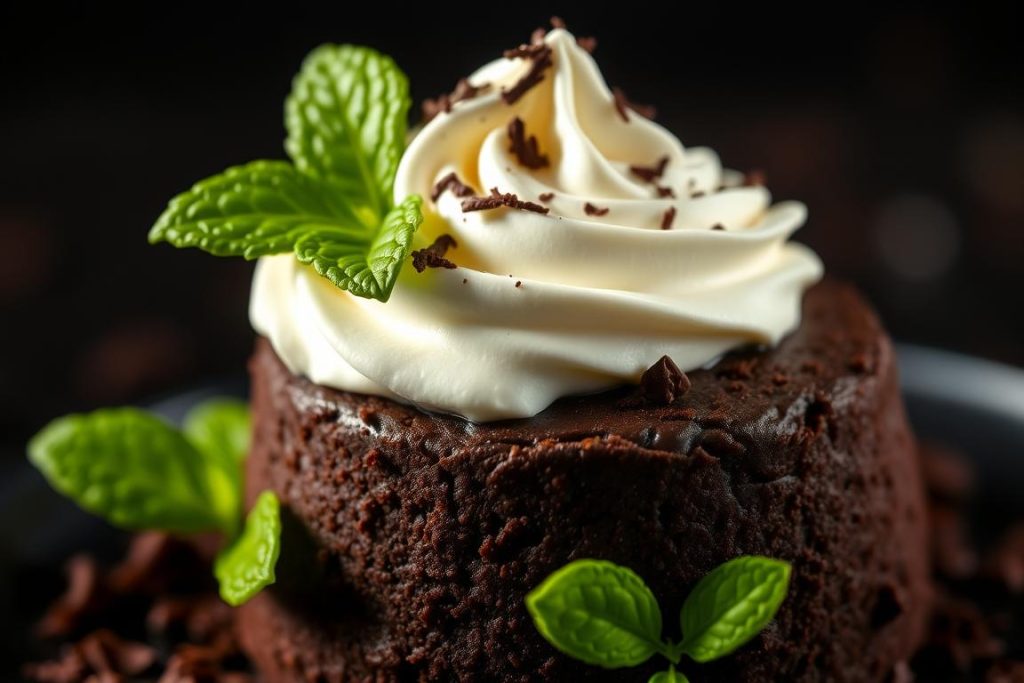
Dairy-Free Alternatives
Plant-based options that capture the essence of traditional whipped cream:
Coconut Whipped Cream
Refrigerate full-fat coconut milk overnight, scoop the solid cream from the top, and whip with powdered sugar and vanilla. The high fat content creates a structure similar to dairy cream.
Aquafaba Whip
Whip the liquid from canned chickpeas with cream of tartar and sugar until stiff peaks form. This egg-white alternative creates a surprisingly light, fluffy topping.
Savory Whipped Creams
Whipped cream isn’t just for desserts! These savory variations add elegant touches to soups, canapés, and main dishes:
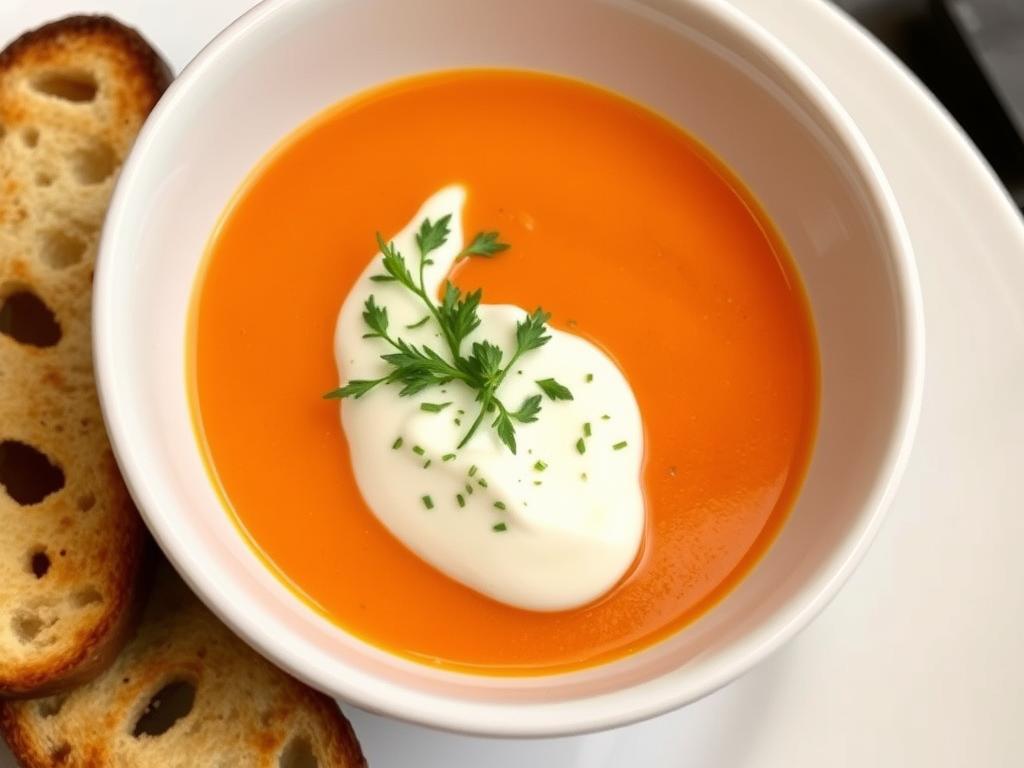
- Horseradish Cream: Whip heavy cream with prepared horseradish, salt, and a touch of lemon juice. Perfect for beef dishes or smoked salmon.
- Herb-Infused: Incorporate finely chopped fresh herbs like chives, dill, or tarragon with a pinch of salt. Ideal for cold soups or roasted vegetables.
- Truffle Cream: Add a few drops of truffle oil and a pinch of salt to whipped cream for an elegant topping for risotto or pasta.
Classic Vanilla Whipped Cream Recipe
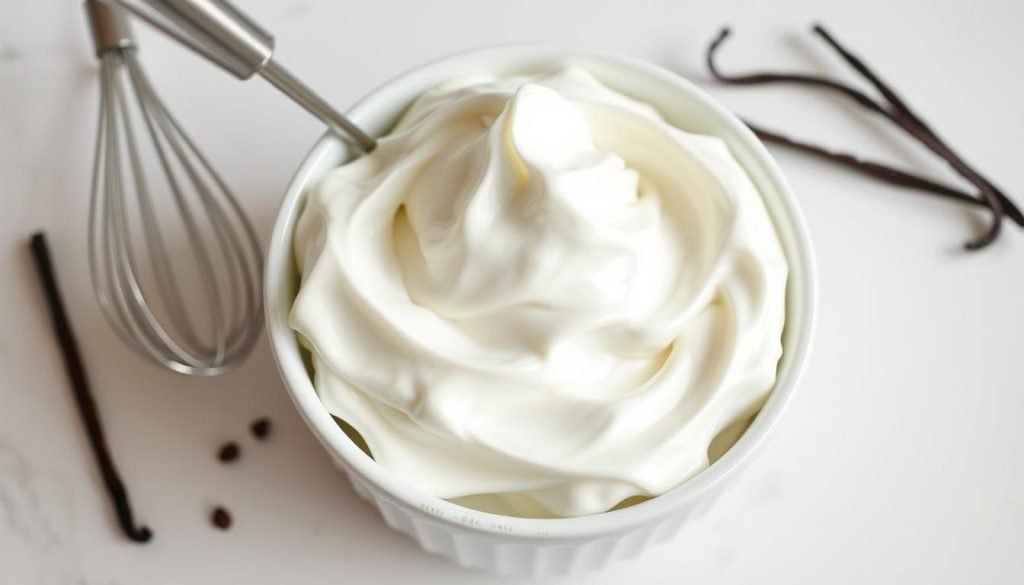
| Classic Vanilla Whipped Cream | ||
|---|---|---|
| 5 minutes | Easy | 2 cups |
| Ingredients | ||
|
||
| Instructions | ||
|
||
Want to perfect your whipped cream technique?
Download our free printable guide with all the secrets for perfect whipped cream every time!
Stabilized Chocolate Whipped Cream
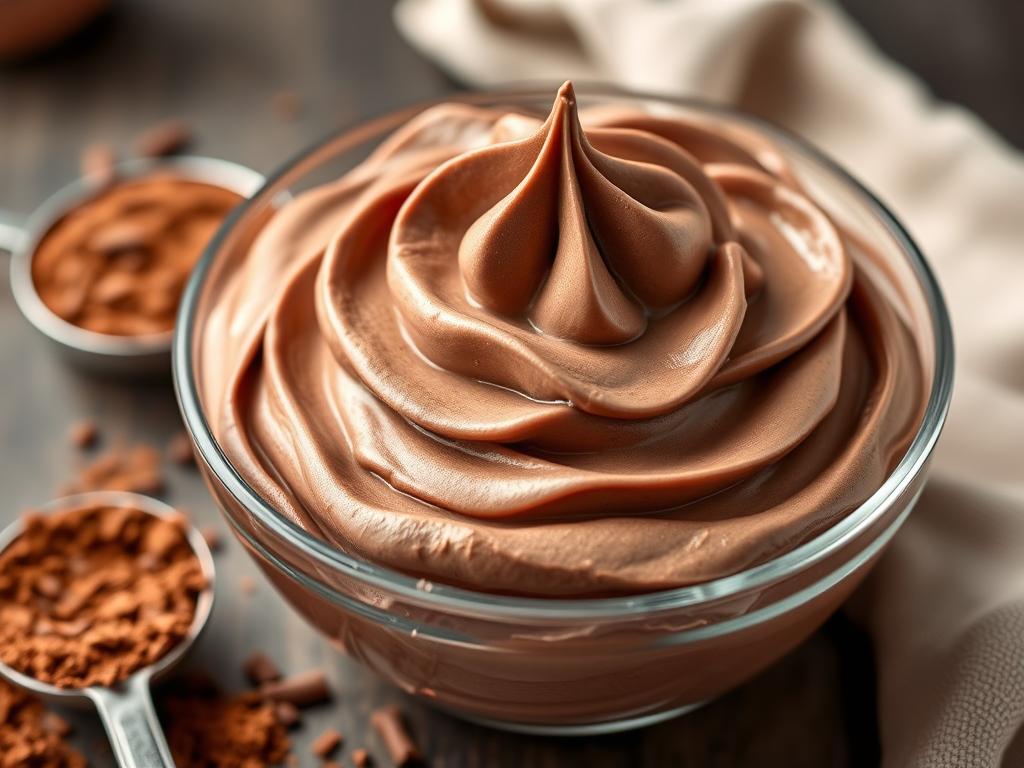
| Stabilized Chocolate Whipped Cream | ||
|---|---|---|
| 10 minutes | Intermediate | 2 cups |
| Ingredients | ||
|
||
| Instructions | ||
|
||
Vegan Coconut Whipped Cream
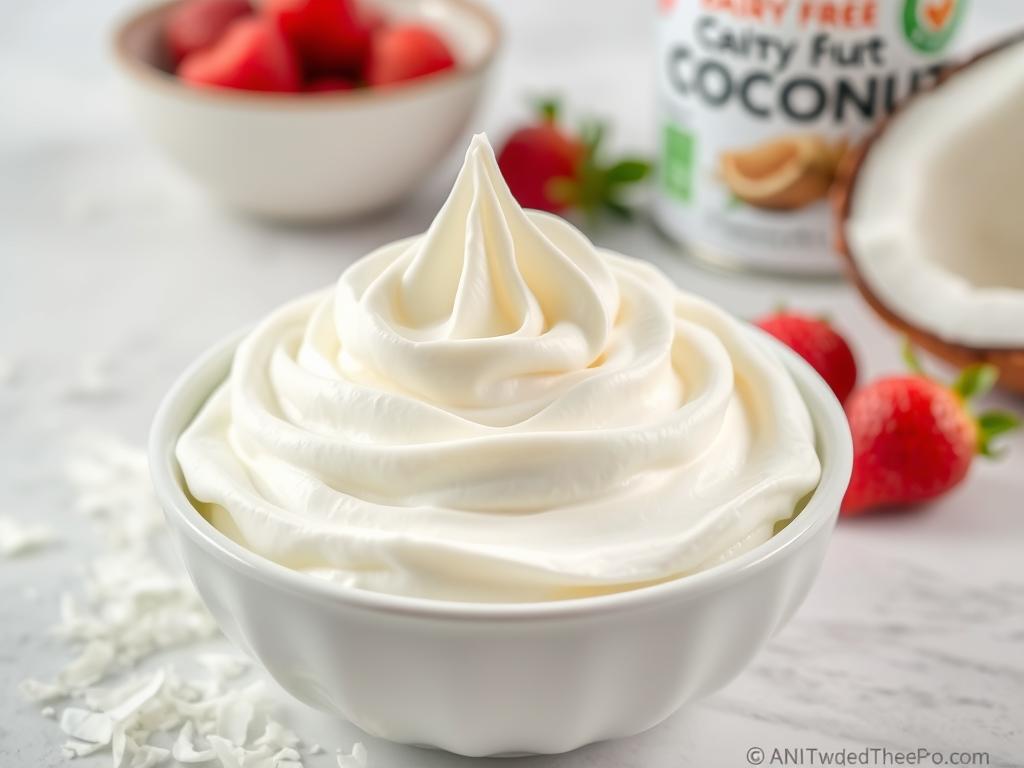
| Vegan Coconut Whipped Cream | ||
|---|---|---|
| 5 minutes (plus overnight chilling) | Easy | 1½ cups |
| Ingredients | ||
|
||
| Instructions | ||
|
||
Mastering the Art of Whipped Cream
Understanding the secret behind whipped cream’s transformation from liquid to airy delight opens up a world of culinary possibilities. Whether you’re topping a simple bowl of berries or creating an elaborate dessert, these techniques will help you achieve perfect results every time.
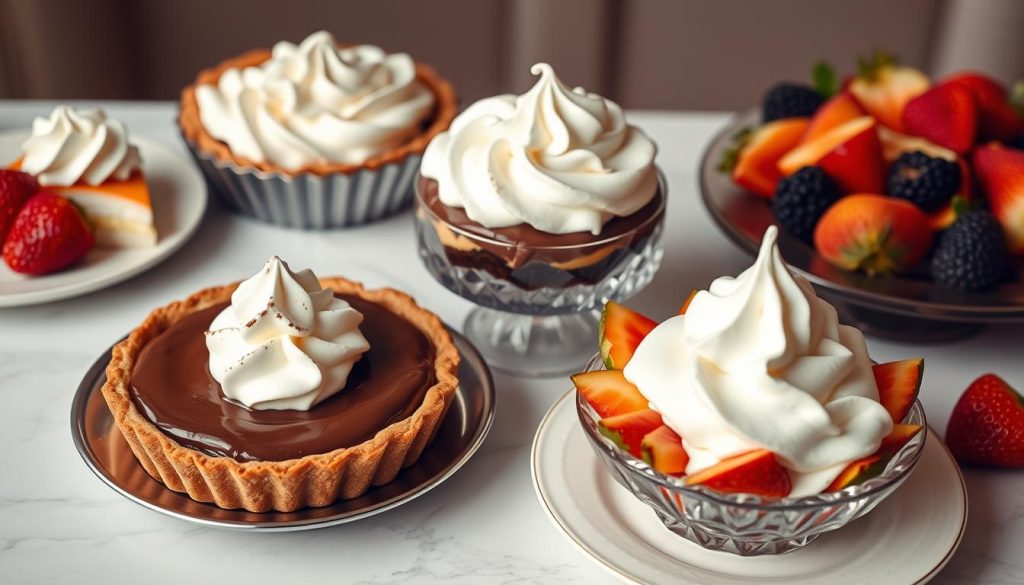
Remember that whipped cream is both science and art. The molecular structure provides the foundation, but your creativity and technique bring it to life. By controlling temperature, fat content, whipping speed, and stabilizing ingredients, you can create whipped cream that’s perfect for any application—from a quick topping for morning pancakes to an elegant finish for a special occasion dessert.
“The perfect whipped cream should taste like a cloud that somehow captured the essence of sweet cream. It should melt on your tongue but hold its shape on your dessert.”
Now that you know the secrets behind perfect whipped cream, it’s time to experiment with your own creations. Whether you stick with the classic vanilla version or venture into flavored, stabilized, or dairy-free variations, you’re equipped with professional knowledge to achieve spectacular results every time.

